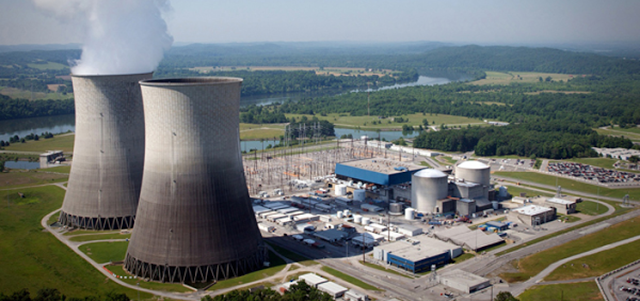Age is no barrier to prolonging the operation of nuclear power plants thanks to technological advances that could not have been predicted by reactor designers working decades ago. That was the conclusion of nuclear industry leaders at a conference hosted recently by EDF Energy and the World Association of Nuclear Operators (WANO) in London.
Commonly referred to as ‘life extension’ – the practice of upgrading existing units to add years to their productivity – is therefore better described as “recovering safety margin”, said Duncan Hawthorne, president and CEO of Bruce Power. Hawthorne, who has led the Canadian nuclear power plant operator since its formation in 2001, said: “Every one of us that works in this industry today is kind of standing on the shoulders of giants. The people who designed the Generation II reactors did so without the benefit of very much operational experience; less than 100 years of reactor opex was available for these plants. So I never talk about life extension, but rather about recovery of safety margin.”
Those “stalwarts of our industry” were working without computers, animation and 3-D stress analysis, he said. “Not surprisingly, they chose to apply conservatisms to their designs to acknowledge what they didn’t know and to recognise that some of the material properties were covered by assumptions.”
Today, the industry has more than 12,000 reactor years of experience to reply upon, along with a “massive quantum of analysis”, he said. “Intergranular stress corrosion cracking wasn’t even talked about when these plants were built and yet every one of us has to deal with it now in some form or other. As an industry we’ve learned how important it is to do good preventative maintenance programs, to have an asset-led management plan and to think of all those components.”
Nuclear plant operators today can also inspect reactors using multiple phased array ultrasonic detectors. “We can use so many more data calculations to come up with proper analysis of what really is the life-limiting factor,” said Hawthorne, who served as chair of WANO’s Atlanta Centre and, until recently, was president of WANO’s governing board. On 1 May, he will become CEO of Horizon Nuclear Power, the wholly owned UK subsidiary of Japan’s Hitachi.
There is no component in a Candu (Canadian nuclear reactor design) reactor that cannot be replaced.
“Where graphite is a limiter on an AGR, for Candu reactors it would be fuel channel integrity, either because of hydrogen uptake or because of elongation,” he said. “We can go in there and scrape those channels, take samples, we can do hydrogen uptake calculations and on the basis of that we can go from what the original design assumption was, of 175,000 full-power operating hours, and to what we are talking about now, which is 300,000.”
Hawthorne said this “massive difference” to the operating potential of Candu reactors is achieved by “much more in-depth examination”.
“We recover some of the safety margin by adding additional operating life. The original design of the Candu reactor expected an operating life for the fuel channels of 25 years, but that was based on 175,000 full-power hours. We will run these plants for 40 years before we change the fuel channels,” he said. “I’ve just signed a deal with the government of Ontario to allow us to refurbish our Candu fleet that will see them operating through to 2060. That’s almost 50 years more. These reactors will go for almost 80 years in operation. Of course, in order to do that we’ll replace the fuel channels and the steam generators, but the important thing is good inspection techniques, much better capability to analyse the group data and statistically to evaluate it. A much larger population of operating experience shared by the industry gives us the ability to recover safety margin.”

Brian Wang is a Futurist Thought Leader and a popular Science blogger with 1 million readers per month. His blog Nextbigfuture.com is ranked #1 Science News Blog. It covers many disruptive technology and trends including Space, Robotics, Artificial Intelligence, Medicine, Anti-aging Biotechnology, and Nanotechnology.
Known for identifying cutting edge technologies, he is currently a Co-Founder of a startup and fundraiser for high potential early-stage companies. He is the Head of Research for Allocations for deep technology investments and an Angel Investor at Space Angels.
A frequent speaker at corporations, he has been a TEDx speaker, a Singularity University speaker and guest at numerous interviews for radio and podcasts. He is open to public speaking and advising engagements.


